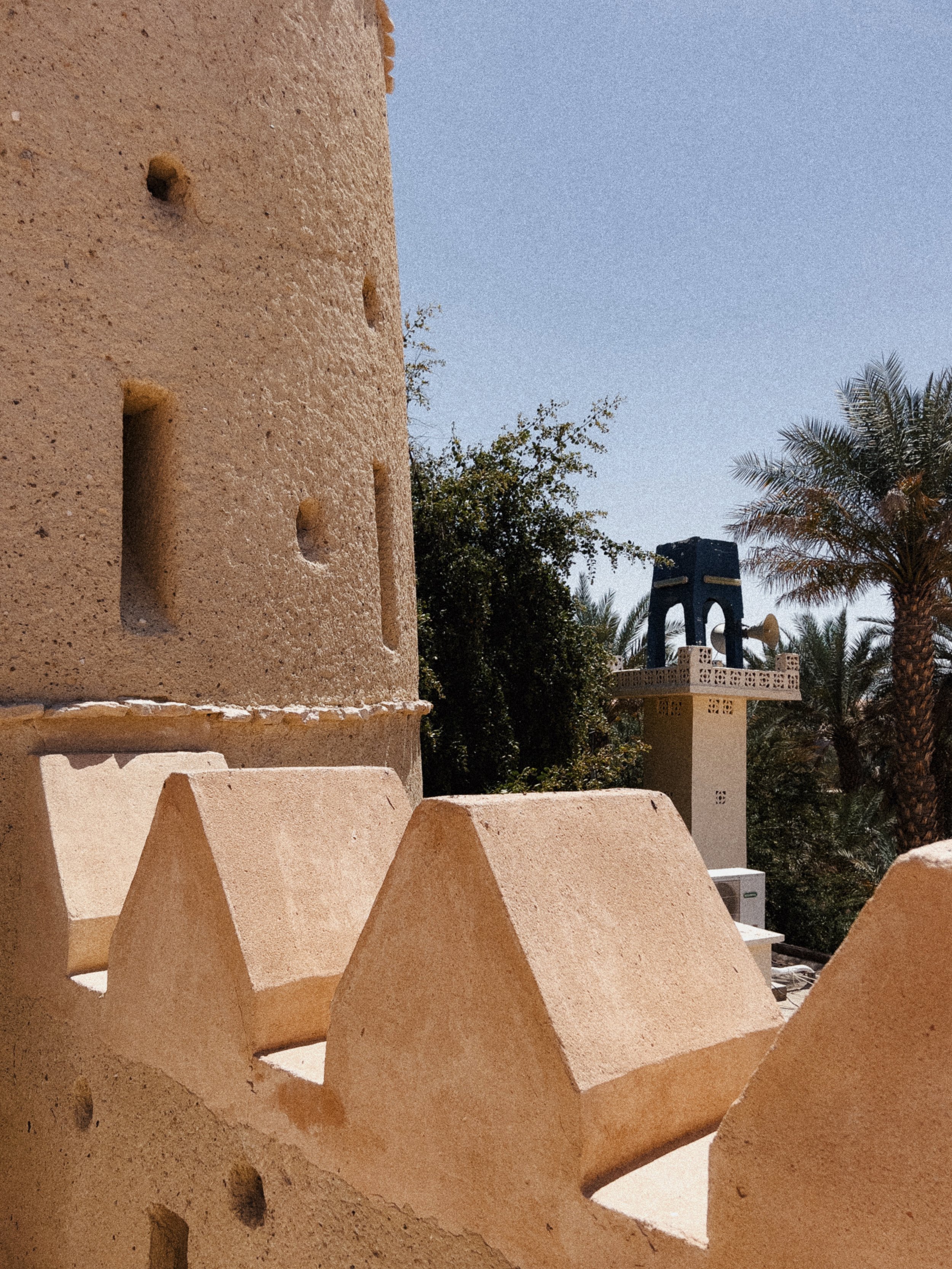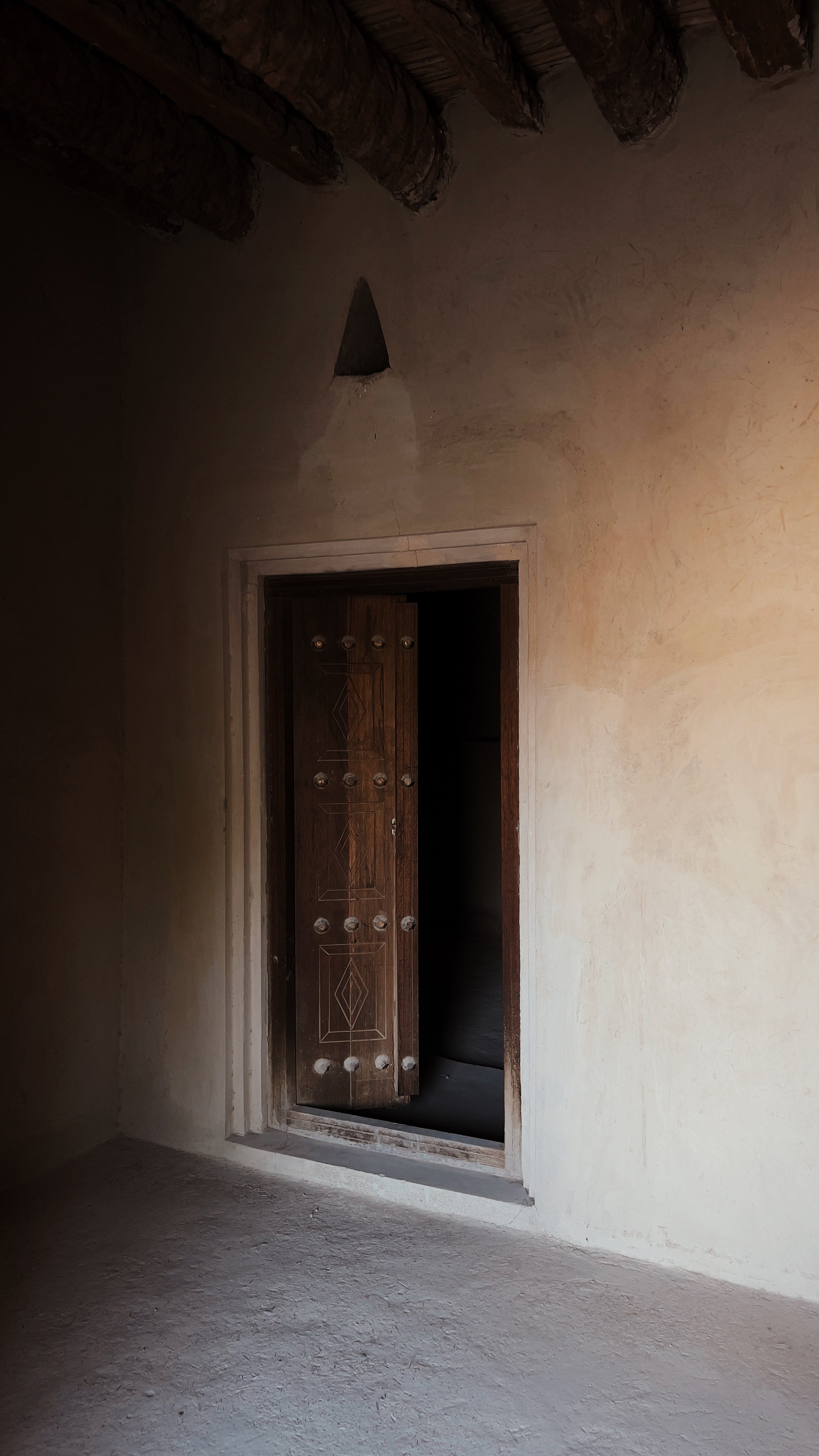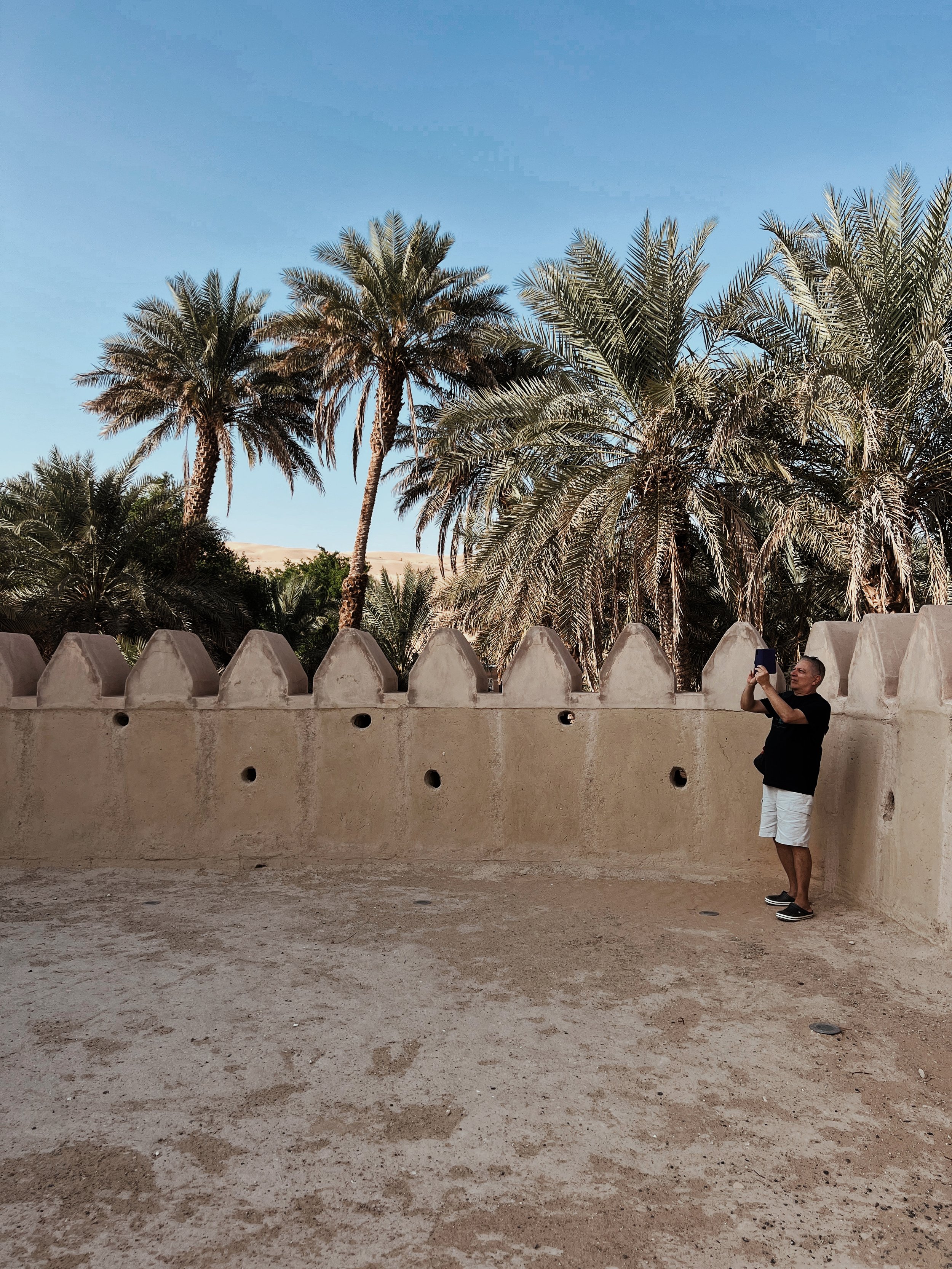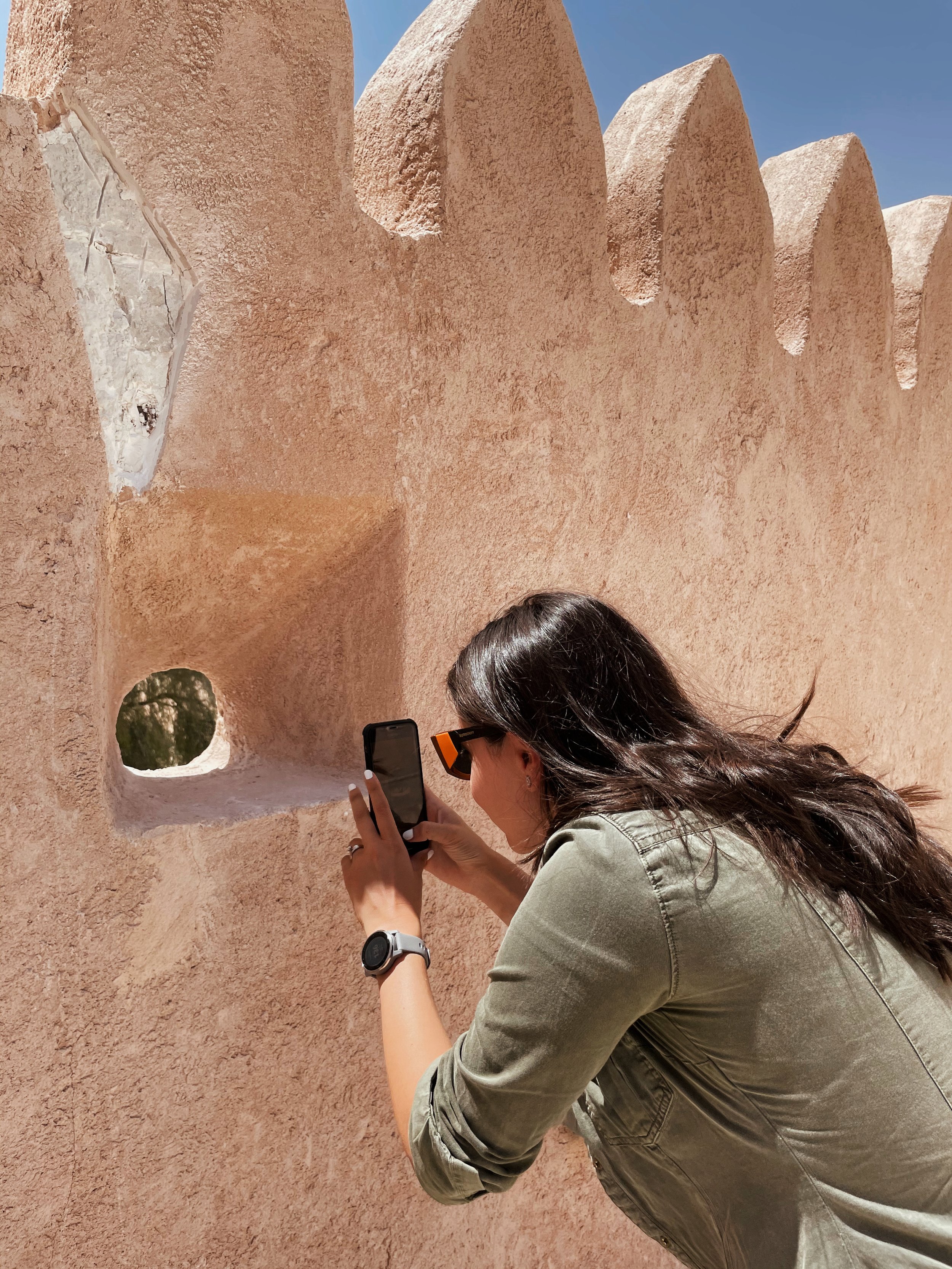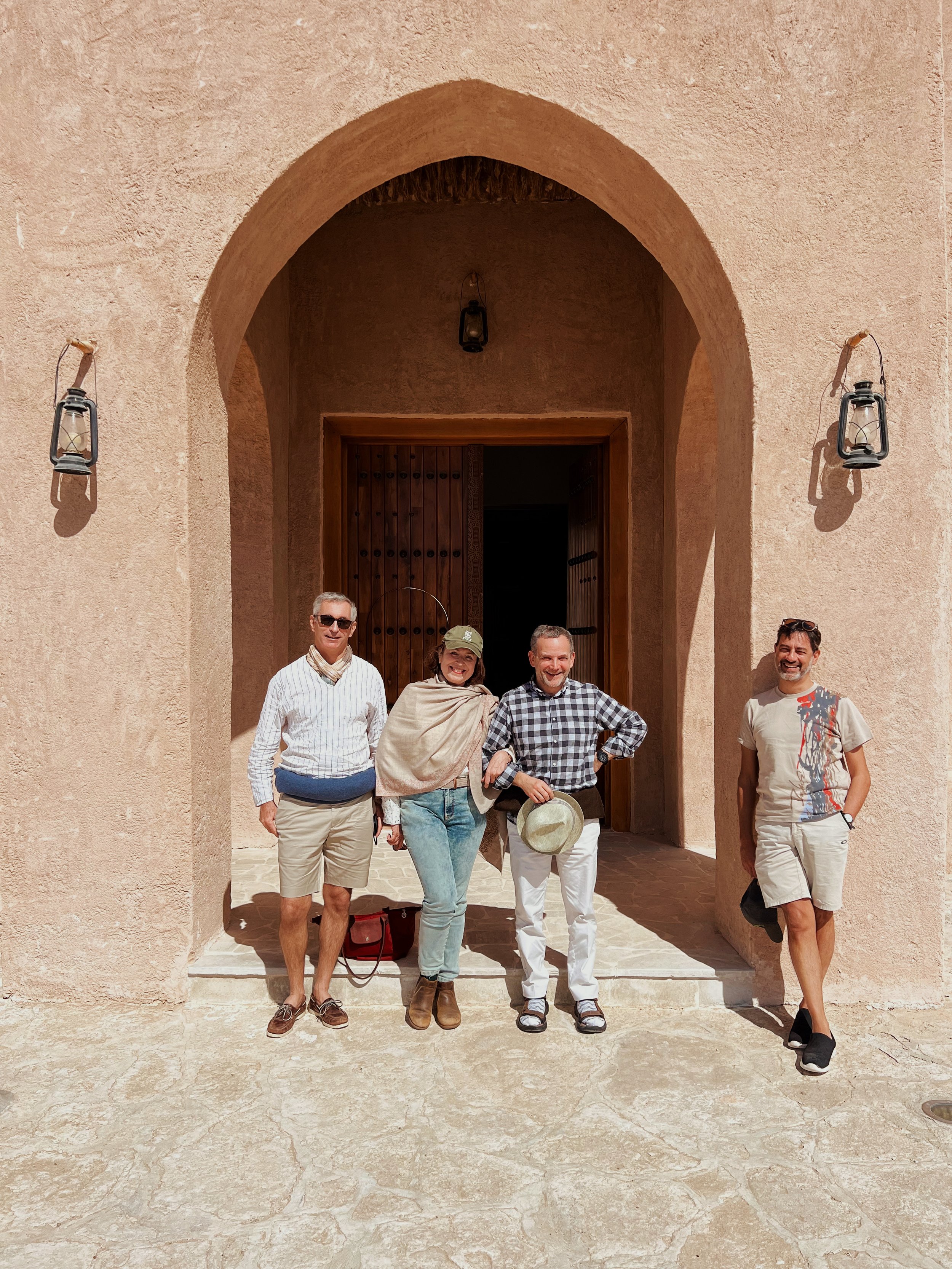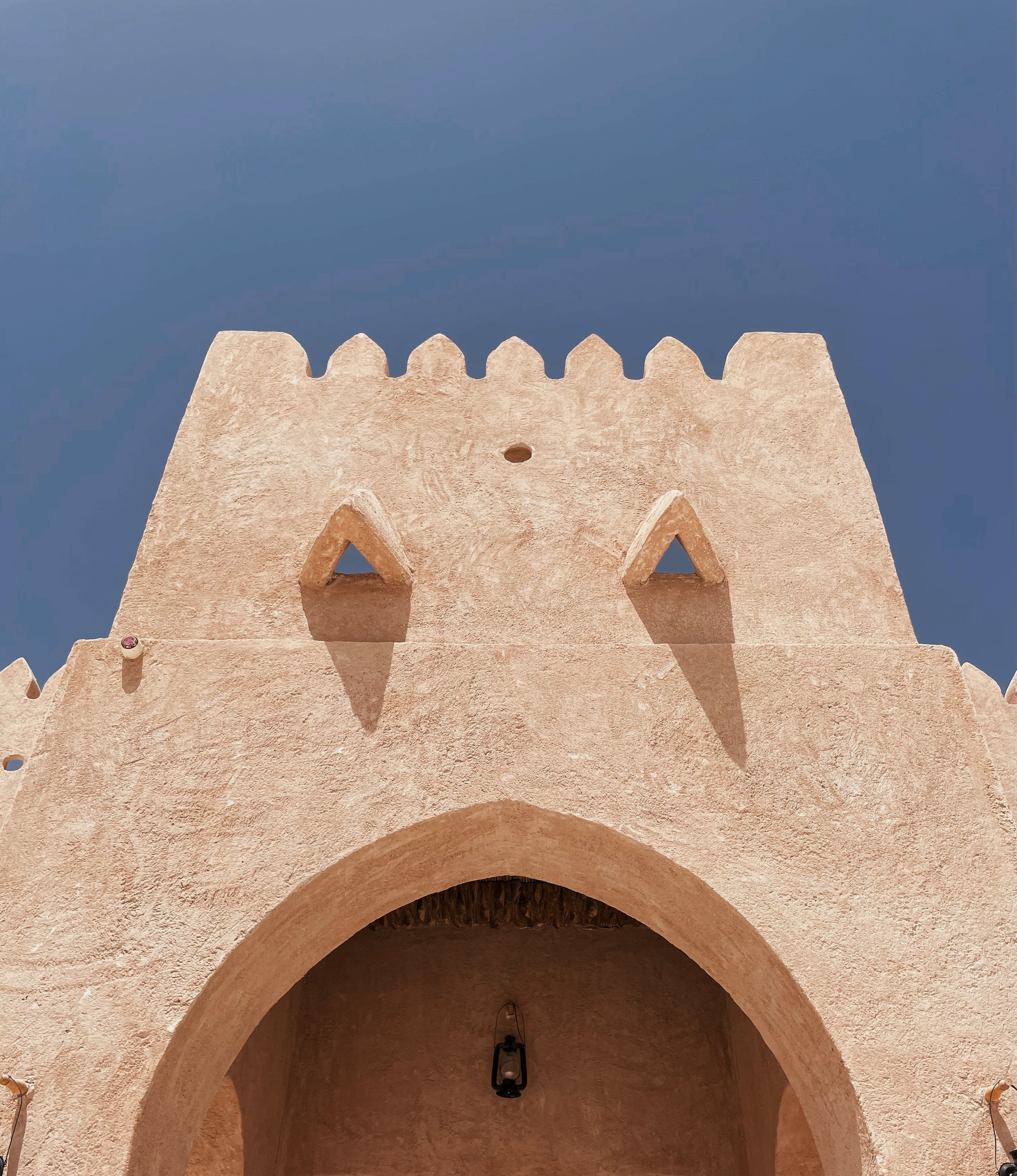
FORTRESS
noun. A large, strong building or group of buildings that can be defended from attack.
“Our ancestors left us a legacy of traditions which make us proud. Our mission is to preserve, develop and maintain it as an asset of this nation for generations to come.”
Founder of the UAE — Sheikh Zayed bin Sultan Al Nahyan
View of ‘arish huts at a Bani Yas settlement in the sands of Liwa oasis, United Arab Emirates, November 14–29, 1948 (b/w photo), Thesiger, Wilfred (1910-2003) / Pitt Rivers Museum, Oxford, UK / © Pitt Rivers Museum / Bridgeman Images
As collected from January 1955 to December 1955
The Dhafra and Liwa (Al Jiwa)
The whole area between the Sabkhat Matti and Khatam and from the sea to the Rub’ al Khali is known as the Dhafra (Al Dhafra).
Liwa (or Al Jiwa) is an oasis in the desert, some 50 miles south of the central point of the Trucial Coast (UAE). It extends for a distance of between 40 and 50 miles from west to east between longitude 53º 10’ E. and longitude 54º 10’E., and has an average width of about 25 miles from south to north between latitude 23º 0’ N. and latitude 23º 30’ N.
Liwa consists of golden yellow and red undulating sand dunes, rising in places to 300 feet above plains, with depressions of gravel or gypsum running east and west between them. In each depressions, there are small areas of comparatively fertile soil, some of which support groves of date palms; there are also wells of sweet water.
Rectangular houses, made of palm fronds, are erected on the slopes of the dunes for the sake of coolness. Some barricades of palm fronds enclose groups of two or three houses inhabited by one family; while other barricades, built along the tops of dunes, shield the palm trees from encroaching sand (Hada’ar)
The settlements stretch in an arc rising from Arada at the south-western end north-eastward to Latir, and descending south-eastwards more gradually, but further south, to Al Jurairah at the south-eastern end. They are close together but invisible to each other, because of the height of the dunes between them. The settlements consist of palm frond houses, some of which are permanently occupied.
Bateen - sometimes called Bateen Liwa - is a stretch of desert south of Liwa (regarded still as a part of Liwa) which runs east and west the whole length of Liwa. Bateen consists of ridges of sand dunes, running west-south-west, and rising somewhat higher than the dunes of Liwa - sometimes to 300 or 400 feet from the white salt flats which separate them by half a mile to two miles. The northern slopes of these ridges are gentle and usually broken, the southern almost vertical. The vegetation is richer and more varied, but the water is worse than that of Liwa. There are many wells in Bateen, and a few small groves of stunted palms round the wells on its northern fringe. The greater part of the vegetation consists of salt bushes (Harm and Shinan), on which camels graze. Most of the wells are salt, those in the south so much so as to be undrinkable. For this reason, the area is sparsely inhabited and without permanent settlements.
There have been forts in Liwa for more than three centuries, and the Al bu Falah sheikhs of Abu Dhabi (Al Nahyan) have continued to build and maintain them there ever since. The following is a list of such as they exist today (Circa 1950s), whether intact or ruinous:-
Al Idd: Built around 1907 by the Manaseer (Al bu Mundhir) now in ruins.
Al Mariyah Al Gharbiyah: Built around 1912 by orders of Sheikh Hamdan bin Zayed bin Khalifa Al Nahyan.
Al Jabbanah: Destroyed in 1889.
Khannour: Built by the Bani Yas around 1802. Destroyed in 1889 in the Battle of Khannour.
Hassan: The oldest fort in Liwa, of which only the barest remains. There used to be an air strip in Hassan that Sheikh Shakhbout used in 1962 when he flew from Liwa to Abu Dhabi.
Mougab: Built by Sheikh Sultan bin Zayed bin Khalifa . Now in ruins.
Qutuf: Built around 1922 by the Bani Yas.
Dhafeer: Built around 1917 by the Bani Yas.
Umm Al Hosn and Hayla Tower (Taraq): Built by the Manaseer (1883-1890)
Numail (Al Meel): Built by the Al bu Falah, but destroyed in 1889.
Six of the sections of the tribe contribute to the population of the Liwa settlements - principally the Mazari’a (Almazrouei) in the west, the Maharbiah (Almehairbi) and Qubaisat (Alqubaisi) in the centre, and the Hawamil (Alhameli) further east. Both the Bani Yas and the Manaseer (Almansoori) have lived together in Liwa for more than 100 years, owning houses and palm groves.
Begin your cultural journey at the gateway of Al Dhafra by visiting Al Dhafra Fort Museum.
Delve into the roots of Liwa where palm groves flourish and fortresses stand tall. Below is a curated list of our favorite easy-access stops while visiting Liwa Nights:
Al Dhafra Fort
Hosn Al Dhafra
Fortress Museum
Built in 2017, Al Dhafra Fort and museum guide you into the heritage and history of the region of Al Dhafra. Recommended first stop on your way into Liwa.
Mezaira’a Fort
Hosn Mezaira’a
Fortress
Built in the 1980’s to mark the location of the previous fortress, but without reference of the previous build as zero remnants remained, Mezaira’a serves as a gateway into Liwa Oasis situated below the green dunes of Liwa Palace.
Dhafeer Fort
Hosn Dhafeer
Fortress
Built about 1917 by the Bani Yas. Dhafeer Fort is unique in its own without watchtowers or a center courtyard. One of our personal favorites noting the particular detailing in the window designs. The ideal time of visit would be when the sun is low and the shadows reveal geometrical detailing along the fortress floors and walls.
Qutuf Fort
Hosn Qutuf
Fortress
Originally built about 1922 by the Bani Yas and rebuilt in the early 1990’s with similar adaptations in design and medium, Qutuf has a single watchtower and courtyard nestled amongst sand dunes, palm groves, a mosque - with the perfect time to visit during afternoon prayers to hear the adhan.
Al Meel Fort
Hosn Al Meel
Fortress
Built by the Al bu Falah but destroyed in 1889 at the same time as Khannour and Al Jabbanah. Also known as Atab Fort.
Liwa is home to majority of the fortresses in Al Dhafra, only a few of which are mentioned above. If your journey has no time limit, we recommend visiting every one:
Mougab Tower
Hosn Mougab
Watchtower
Originally built by Sheikh Sultan bin Zayed bin Khalifa Al Nahyan - Ruler of Abu Dhabi from 1922-1926. In ruins in 1955 and rebuilt in 2004.
Khannour Fort
Hosn Khannour
Fortress
Originally built in 1802 and destroyed in 1889. Khannour Fort is known in history during The Battle of Khannour which took place from January-February 1889. Currently under renovation. Please respect the temporary closure.
Al Mariyah Al Gharbiyah Tower
Hosn Al Mariyah
Watchtower
Built around 1912 by the orders of Sheikh Hamdan bin Zayed bin Khalifa Al Nahyan - Ruler of Abu Dhabi from 1912-1922. The tower was rebuilt during the mid 1990s.
Al Hayla Tower
Hosn Al Hayla
Watchtower
The tower of Al Hayla with camel enclosure was built by the Manaseer around 1883-1890. More than a century later sits the remains of the original tower. Currently fenced and closed for restoration. Please respect the temporary closure.
Umm Al Hosn Tower
Hosn Umm Al Hosn
Watchtower
The tower of Umm Al Hosn was built by the Manaseer around 1883-1890. More than a century later sits the remains of the original tower, just north of the new construction. Currently fenced and closed for restoration. Please respect the temporary closure of the original site.
Al Jabbanah Fort
Hosn Al Jabbanah
Fortress
Standing tall near the eastern end of Liwa is Al Jabbanah Fort. Destroyed in 1889 along with Khannour Fort.
To make most of your time in Liwa, it is recommended to commence at Al Dhafra Fort, follow the list of Liwa Forts ending at Al Jabbanah, and take the E65 back to Abu Dhabi concluding your journey at Emirates National Auto Museum.
Feel free to WhatsApp or call Liwa Nights with any questions or suggestions +971 50 660 7227.








